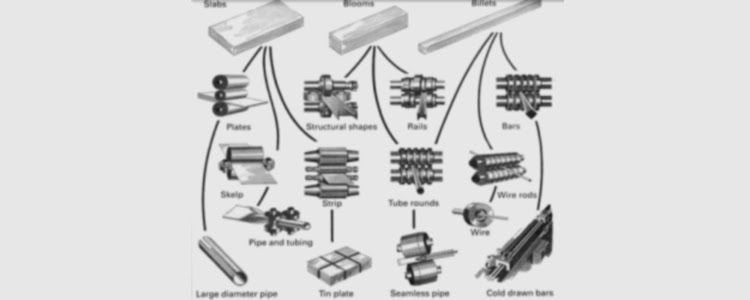Hot working refers to process where metals undergo plastic deformation at temperatures above their recrystallization point. This helps achieve the material to recrystallise during deformation. This is essential as recrystallization prevents the material from strain hardening, thereby preserving the yield-strength and low hardness along with high ductility of the material. This differentiates hot working from cold working.
Temperature for Hot Working:
The lower limit for hot working is determined on basis of its recrystallization temperature which is generally 0.6 times of it melting point on an absolute temperature scale. On other hand, upper limit for hot working depends on numerous factors including grain growth, excessive oxidation or an undesirable phase transformation. While hot forming, materials are generally heated to upper limits to minimize forces as well to gain maximum time to hot work the workpiece.
However after attaining the desired hot forming temperature it is equally essential to maintain this temperature. Most of the heat during heat forming is lost through surface of workpiece to cooler tooling around. This causes temperature gradients in workpiece which can lead to cracking in the cooler, lesser ductile surfaces. Hence, in majority of cases tooling is heated. Hotter the tooling, lesser would the heat be lost. Keeping all these conditions in consideration, ideally hot working is performed around 325-450C. The lower limit for hot working for tin is room temperature whereas is 2000F for steel and 4000F for tungsten.
Some major hot forming processes include:
You can read further on http://www.wiredrawingdies.co.in/hot-forming/. Please visit www.wiredrawingdies.co.in for more details on our products and services.

No comments:
Post a Comment